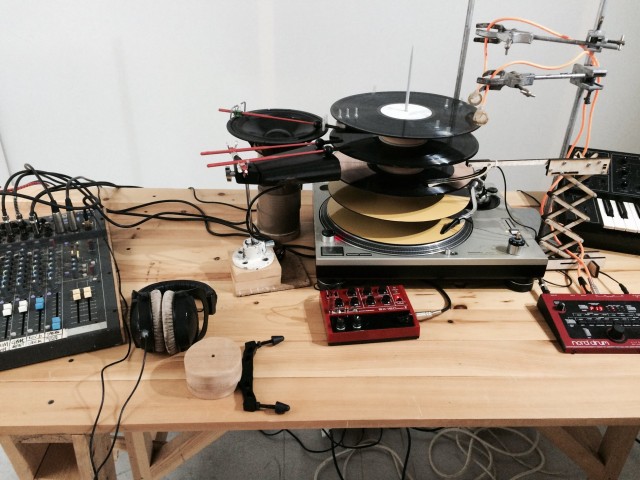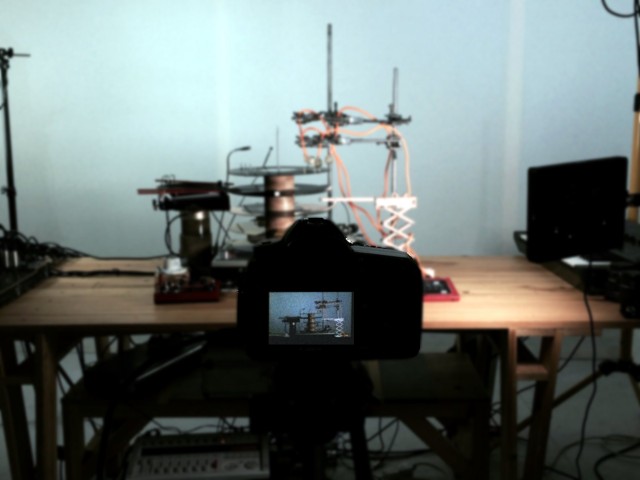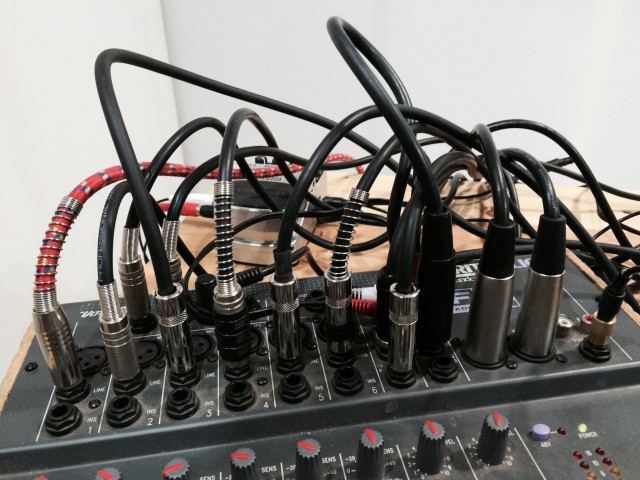Techno has become folk art, popular music idiom. Yet it’s still often viewed through the machines that first made it. What if you could give it some sort of physical, mechanical form?
That’s what Graham Dunning has done with Mechanical Techno. And in a new video (produced by Michael Forrest), he shows how it’s done.
Cut-up records on turntables stand in for samples and synths. Electrical contacts produce buzzes of sound as wires touch copper. Cowbells become kinetic, robotic sculptural elements.
Basically, every rhythmic element is mapped into physical space, into locations on discs.
Oh yeah, and be sure to enjoy what happens at the end as optical sensors go nuts with additional objects.
It’s like what would happen if you commission Rube Goldberg to build your new music studio, or if we entered an alternate universe where Roland never existed but the pianola was adapted to make dance music.
And, incidentally, even the modern drum machine really does have similar mechanical results. See Darsha Hewitt’s SideMan 5000 video Project. The world’s first commercial drum machine, while hardly a huge success, itself used mechanical discs to generate rhythms – very much related to what you see here.
I like to say that the repetitive patterns in techno are related to physical motion in the body, perhaps even the body’s internal rhythms. But here is another way to imagine it – that these rhythms can emerge from real or hypothetical physical processes. The musical is mechanical.
This project was a research project; details:
Mechanical Techno Demonstration by Graham Dunning
Video produced by Michael Forrest.Made at Lime Wharf Machines Room as part of
Rhythm & Drone // Research & Development
residency, September 2015.
https://rhythmanddrone.wordpress.com/Supported using public funding by the National Lottery through Arts Council England
And Graham has been nice enough to share some behind-the-scenes images with us, as well.



